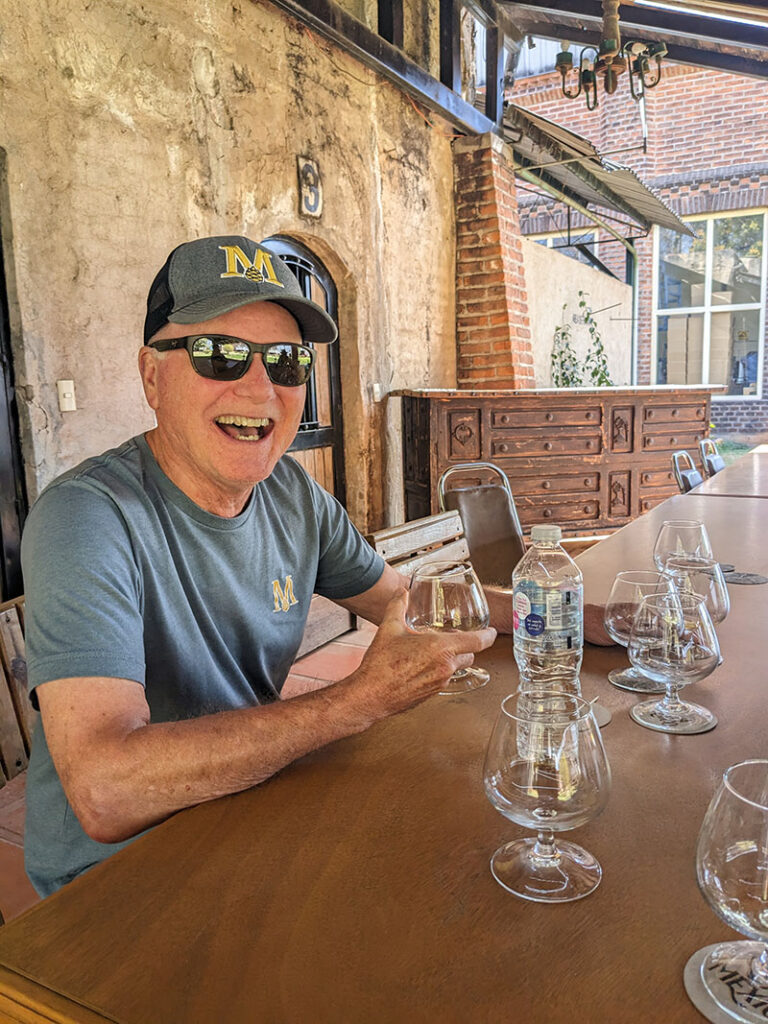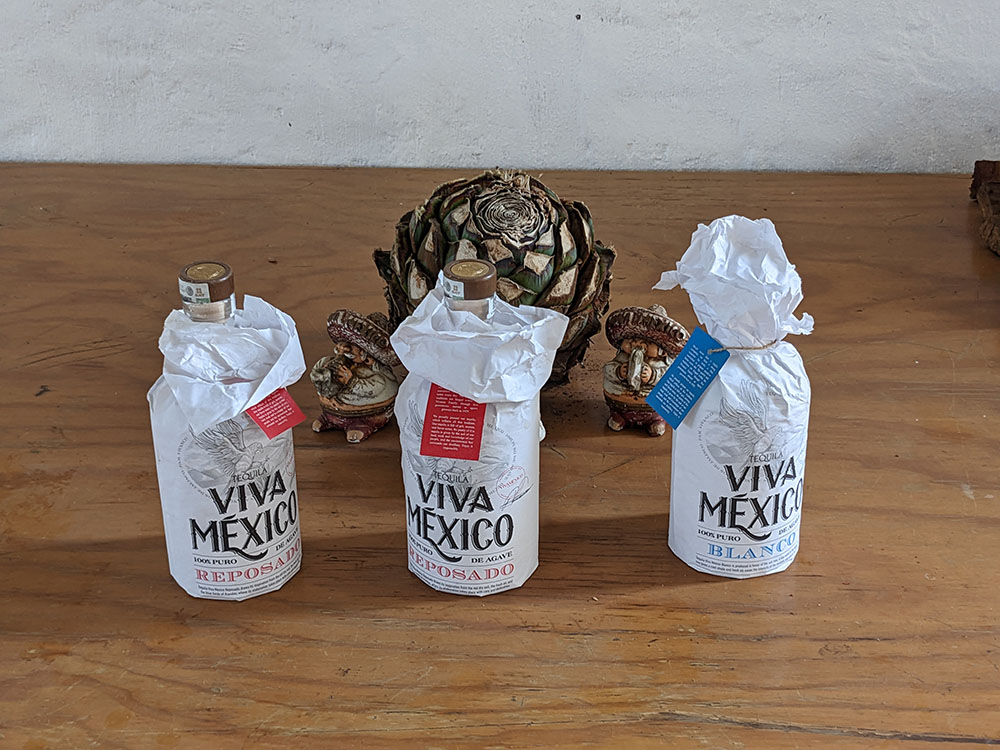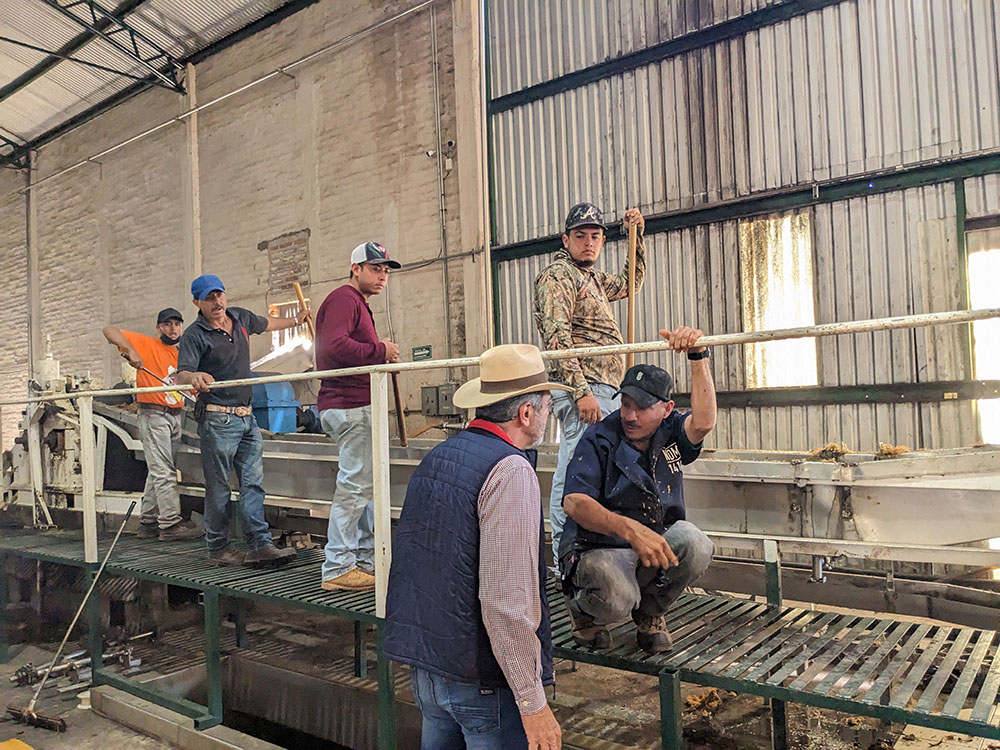

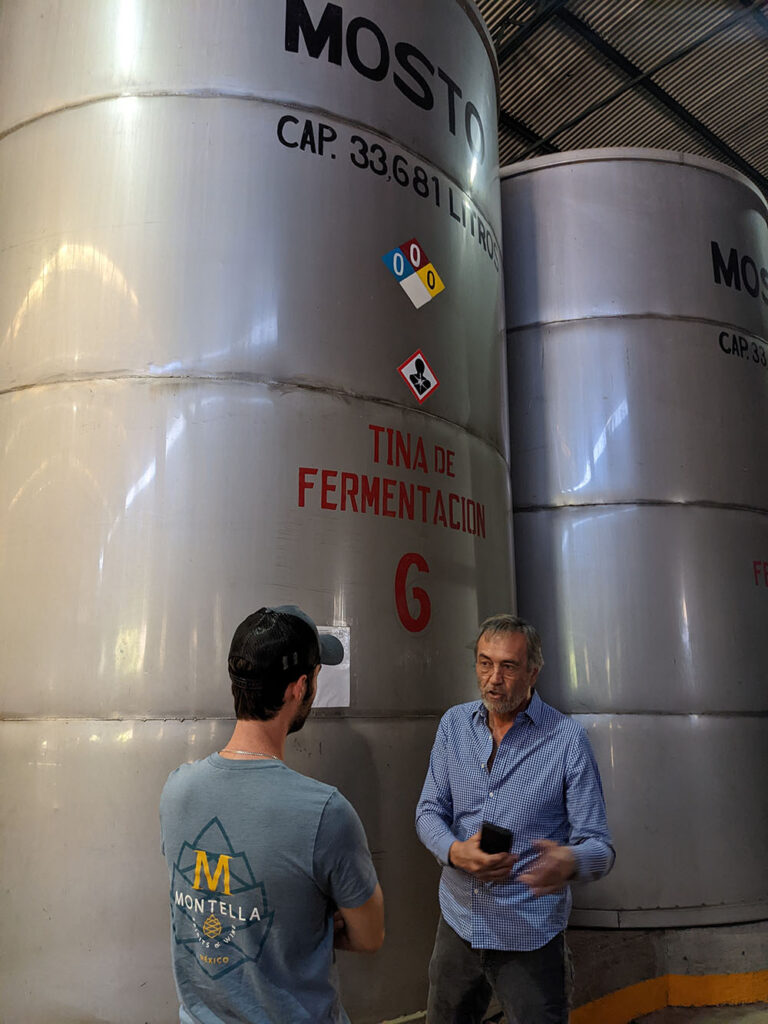

Casa Tequilera Viva México is a company that, for many years since 1929, has developed the art of making Tequila, with a long tradition that began as agave growers.
We grow the blue Agave plant in the fields of Arandas, with proper maturation and selection in order to obtain a 100% handmade product. “The true flavor comes from the earth”, said Feliciano Vivanco who, with his children, established the Viva México/ El Ranchito Tequila Factories at the end of 1994.
In the heart of Arandas, in the state of Jalisco, Tequila Viva México was born, the pride of the Vivanco Family and a brand that would earn them recognition as producers of fine tequila.
The experience, values and traditions rooted in the Vivanco Family have allowed five generations of agave producers and traders to earn national and international distinctions through their own brands and through contract manufacturing of other brands, complying with the highest quality standards for production, while never forgetting the beauty, art and complexity involved in being able to offer a product worthy of the land of tequila.
Casa Tequilera Viva Mexico shares, in each drink, not only its flavors, but also the pleasure, joy, effort and dedication we place in each bottle, thus our clients enjoy much more than the tequila itself.
Casa Tequilera Viva México. Welcome to our Family.

Feliciano Vivanco
Viva Mexico
ABV: 40%
Agave: 100% Agave tequilana weber var. azul
Region: Los Altos de Jalisco (from their own ranches)
Cut and Selection: Cut with coa, with 6-8 years of maturation
Cook: Slow cooked with steam in traditional brick ovens for 24 hours
Fermentation: Natural yeast derived from the agave plant. Minimum of 120 hours with the soothing sound of classical music
Distillation: Double distilled in copper pot stills
Special Attributes: Confirmed Additive Free by Tequila Matchmaker
Kosher
Viva Mexico
ABV: 40%
Agave: 100% Agave tequilana weber var. azul
Region: Los Altos de Jalisco (from their own ranches)
Cut and Selection: Cut with coa, with 6-8 years of maturation
Cook: Steam cooked in traditional brick ovens for at least 24 hours
Fermentation: Champagne yeast. Minimum of 120 hours with the soothing sound of classical music
Distillation: Double distilled in copper pot stills
Age: Unaged
Special Attributes: Confirmed Additive Free by Tequila Matchmaker
Kosher
Appearance: Excellent transparency and clarity, evidently full-bodied in the glass.
Aroma: A clear tequila with fruit notes such as peach and green guava, citrus notes of lime and grapefruit, and even herbal notes such as mint, olive trees and olives, without losing the essence of raw and cooked agave, with light hints of a combination of spices including cinnamon and pepper.
Flavour: The beginning is silky smooth, confirming its aromas and transporting us to the flavors of the raw agave, offering elements such as mint, spearmint, olives; with the citric characteristics of grapefruit and lime. A sweet finish of cooked agave and a light spicy pepper that confirms a balanced tequila.
Viva Mexico
ABV: 40%
Agave: 100% Agave tequilana weber var. azul
Region: Los Altos de Jalisco (from their own ranches)
Cut and Selection: Cut with coa, with 6-8 years of maturation
Cook: Steam cooked in traditional brick ovens for at least 24 hours
Fermentation: Champagne yeast. Minimum of 120 hours with the soothing sound of classical music
Distillation: Double distilled in copper pot stills
Age: Average of 4 months in American oak (used bourbon barrels)
Special Attributes: Confirmed Additive Free by Tequila Matchmaker
Kosher
Appearance: In the glass, it is a full-bodied tequila with a yellow straw color.
Aroma: A wide range of aromatic notes, from fruit notes such as pineapple, cherry and peach, with a touch of rosemary and olives, while preserving the citrus hints of grapefruit and lime. to vanilla, caramel, cinnamon and walnut, contributed by the barrel.
Flavour: Its flavour affirms the presence of fruit such as pineapple and cherry, with notes contributed by the barrel such a caramel, walnut, vanilla and white chocolate. A soft tequila with a balance of sweetness, a touch of anise and a long finish.
Viva Mexico
ABV: 40%
Agave: 100% Agave tequilana weber var. azul
Region: Los Altos de Jalisco (from their own ranches)
Cut and Selection: Cut with coa, with 6-8 years of maturation
Cook: Steam cooked in traditional brick ovens for at least 24 hours
Fermentation: Champagne yeast. Minimum of 120 hours with the soothing sound of classical music
Distillation: Double distilled in copper pot stills
Age: Average of 18 months in American oak (used bourbon barrels)
Special Attributes: Confirmed Additive Free by Tequila Matchmaker
Kosher
Appearance: Amber-colored and full-bodied in the glass.
Aroma: We sense the full influence of the barrel, with predominantly sweet aromas from the wood such as caramel, maple, cocoa, chocolate and dried fruits such as prunes; shades of tobacco and grapefruit confirms its origin, whit light notes of rosemary, thyme and banana.
Flavour: Great smoothness with a sweet strike of maple, white chocolate, vanilla and coffee. It retains its sense of dried fruits, such as raisins and plums. Its taste in the mouth invites us to take another sip so we can appreciate the sweet and bitter combination that makes it so captivating.
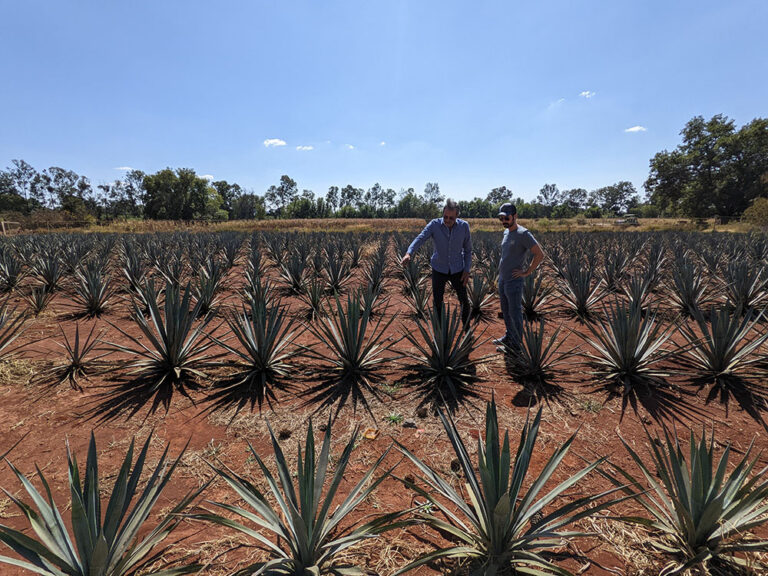

Tequila Viva Mexico is a traditionally produced tequila from Los Altos de Jalisco (highlands region). In the past, Los Altos didn’t produce much tequila, instead selling their mature agave to the Tequila valley region to satisfy the rapidly growing demand for tequila. By the mid 20th Century, when the valley was able to sustain production again, the agave farmers from Los Altos decided to take their turn at producing the famous spirit.
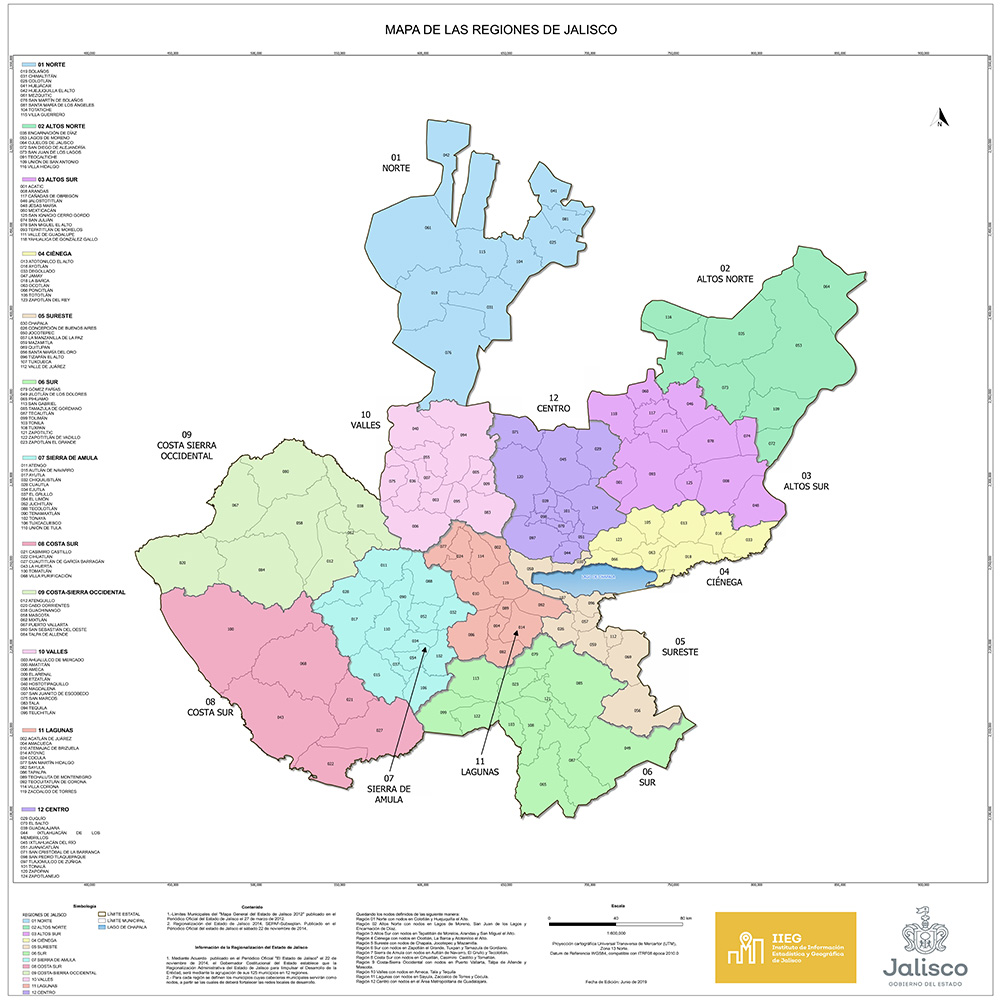

Arandas is located in region 03: Altos Sur (Source: IIEG)
One of the most important aspects about Viva Mexico is that they control production from seed to bottle. Owning their own ranches and plants gives them a better handle on quality control and with almost 100 years in the agave growing business, they know how to harvest the best! The Vivanco family are 5th generation agave farmers and 3rd generation tequila producers.
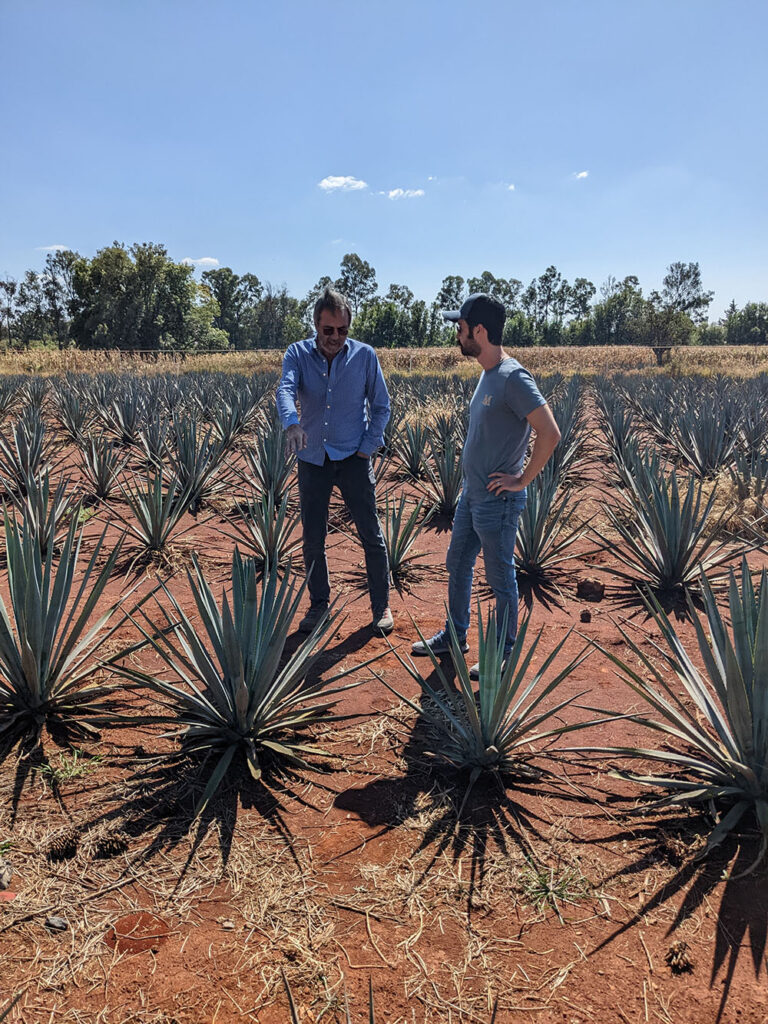

The iconic red clay soil of the Los Altos region is not just spectacular to look at, but also highly fertile. The agaves that are cultivated in this region tend to be fruitier and mature faster. While the blue agave can reproduce easiest by hijuelo (clone from the root of the mother plant), Viva Mexico makes sure to also collect seeds from a fully mature plant (giving up the possibility of using it for tequila production) in order to genetically diversify their crop. This helps to protect against pests and diseases. After 5-7 years, the plants are mature enough to be cut by hand by some of the hardest working people in the industry, los jimadores. They carefully shave off the pencas (leaves) with a coa (straight, circular hatchet on a long pole) and harvest the piña (agave heart.
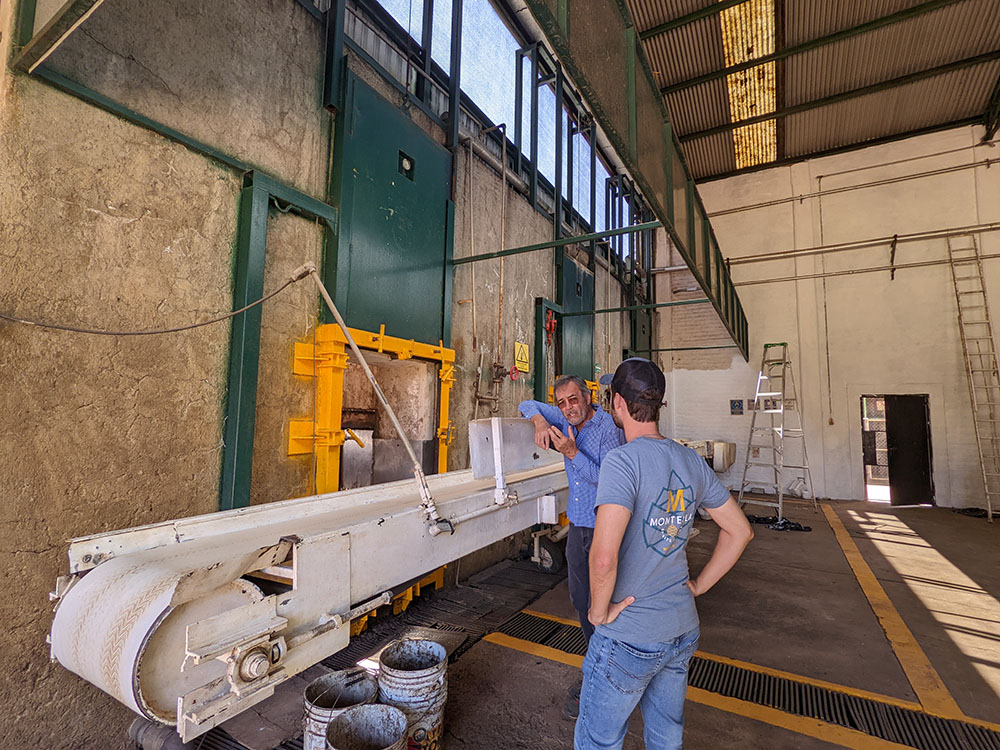

The cut piñas are then transported to the distillery where they are unloaded and cut into halves or quarters (depending on their size) before being loaded into one of three artisanal brick hornos (ovens). The brick horno is the traditional way to cook agave for tequila production and is done so by injecting steam into the horno for a period of at least 24 hours in order to slow-cook it. After that period, the horno is opened and given time to cool before loading the cooked piñas onto the roller mill.




Here we can see the roller mill in action. It works by taking the cooked piñas down the conveyor belt, milling it into fiber and injecting water into the fiber in order to wash all of the miel (fermentable sugars) off of the fiber and divert it into a canal below. The workers shown aid in spreading the fibers and making sure all the miel is extracted. The miel is then pumped into one of the stainless steel fermentation tanks. In order to activate, yeast is added to a separate small bucket of miel. For the Viva México Retro line, a champagne yeast is used, while for the Origen, a wild yeast from the agave is added. The activated mosto is then added to the rest of the tank spark the process. During this time, as per a very interesting technique, classical music is played on loudspeakers to create uniform vibrations than quite literally make the yeasts dance. During approximately the next 120 hours, the yeasts convert the sugars in the mosto into alcohols and other components until they finally run out of material and the mosto is deemed no longer active.
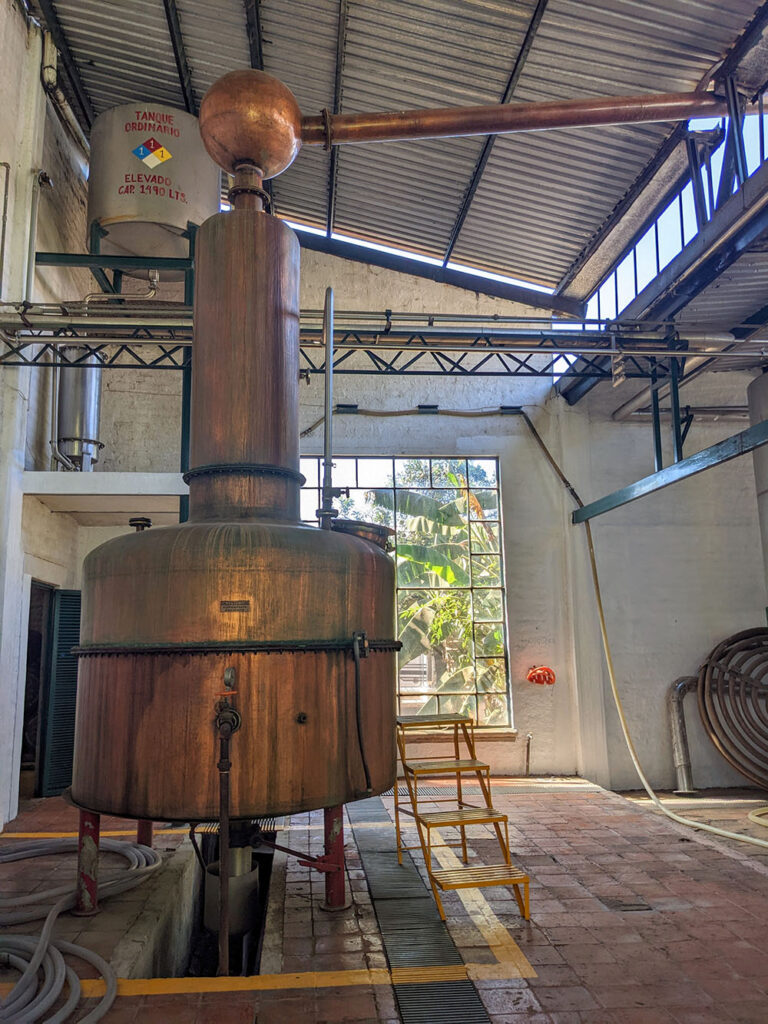

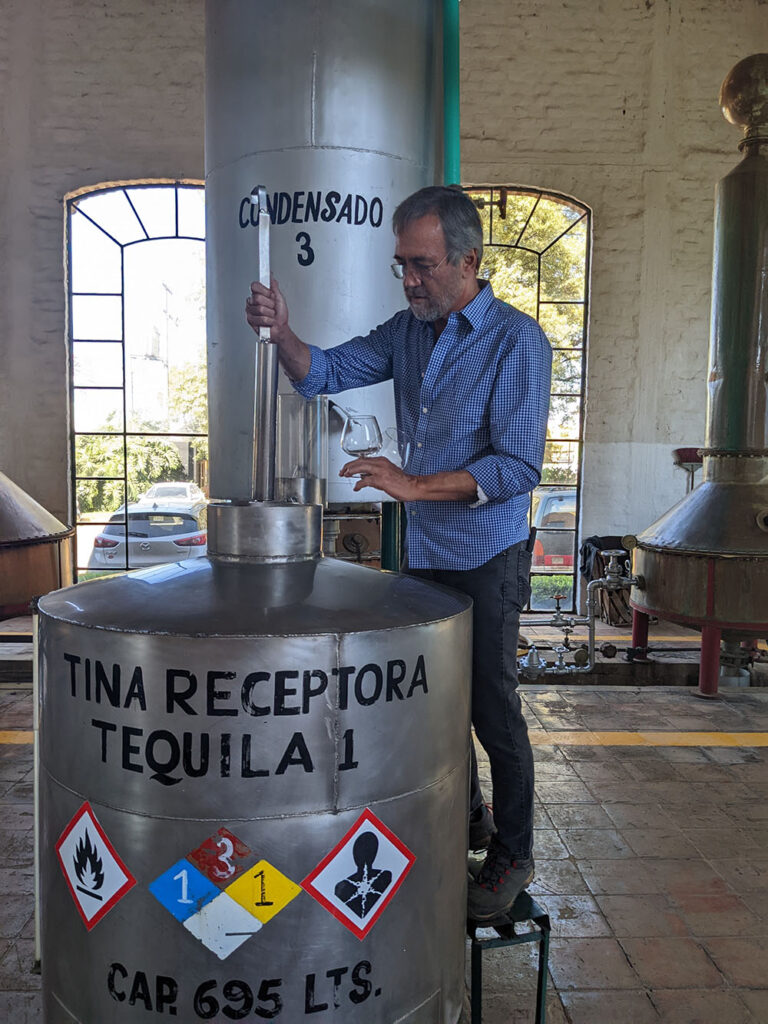

After fermentation is complete, the mosto is pumped into a copper pot still to carry out the first distillation and obtain what is known as ordinario. The ordinario is then distilled a second time in another copper pot still. The heads (what comes out first) and the tails (what comes out at the end) are discarded as they contain unwanted chemical compounds, some which are unsafe for consumption. Only the heart of the distillation is collected in the tina receptora (receiving tank) shown in the photo above. The heart averages at around 55% ABV! As this is too strong for most consumers, it is mixed with a small amount of water to bring it down to a more palatable 40% ABV.
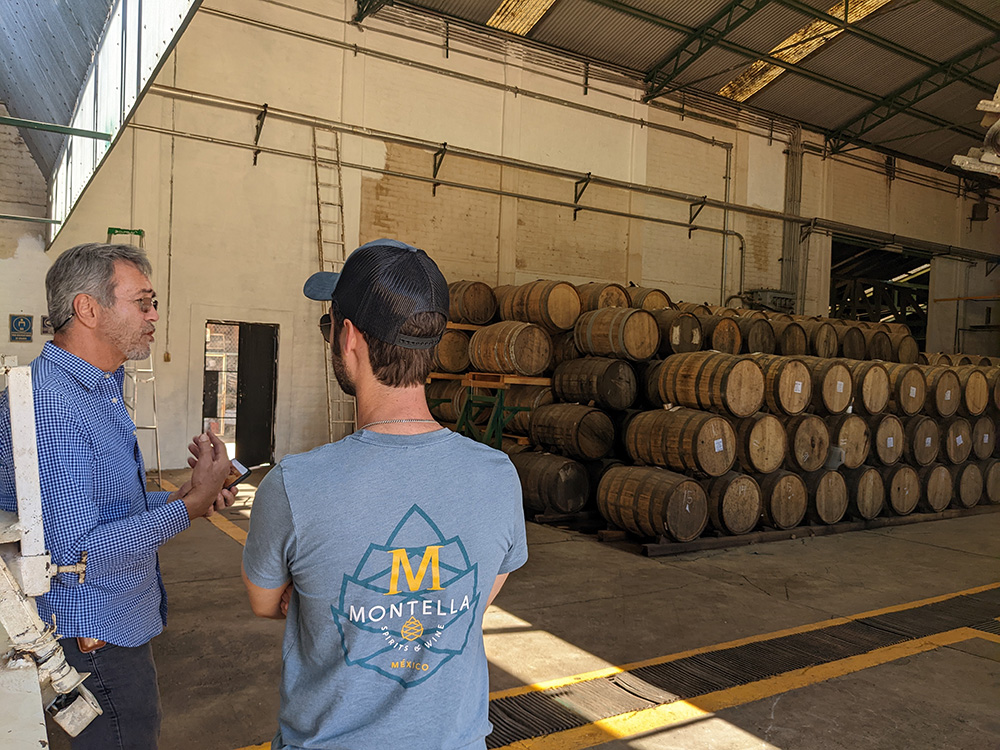

Finally, the blanco is then bottled without any wood aging in order to highlight the fresh and fruity notes of the Los Altos agave. The reposado and añejo are aged in American white oak barrels previously used for bourbon. The reposado is aged for an average of 4 months, creating an impressive harmony between the fresh floral notes of the blanco and the sweet, caramelized notes from the barrel. With an average of 18 months in the barrel, the añejo is best enjoyed after dinner as its greater barrel influence gives way to notes of white chocolate, maple and nuts. Each expression is carefully crafted with the best highlands agave and traditional techniques in order to bring you the very best of Los Altos. Viva Mexico!!!
